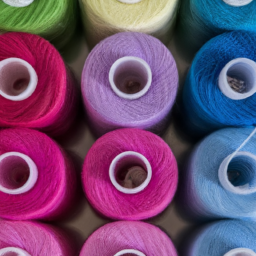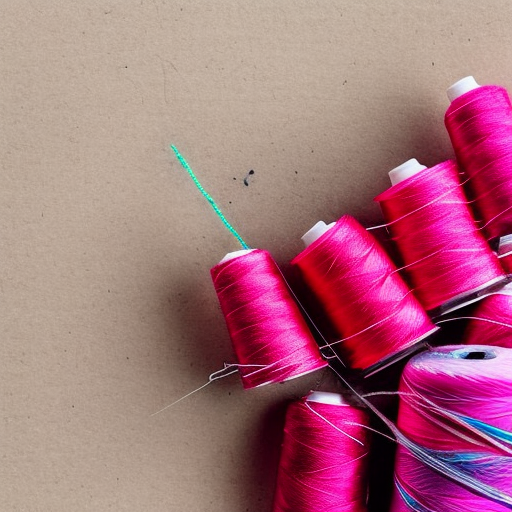
?

Maintaining good oral hygiene is crucial for overall dental health. Alongside daily brushing of teeth, dental professionals often recommend flossing as an essential part of your dental routine. However, there may be instances where you find yourself without traditional floss but possess sewing thread. The question naturally arises – can I use sewing thread as a substitute for floss?
Sewing Thread vs. Dental Floss
While sewing thread may appear similar to dental floss, there are some key differences that make it less ideal for flossing.
- Thickness: Dental floss is thin and smooth, specifically designed to fit between teeth and efficiently remove plaque and food particles. Sewing thread, on the other hand, may be significantly thicker, making it more difficult to maneuver between teeth.
- Strength: Sewing thread is typically made to withstand the stress of sewing fabrics together, meaning it may be stronger than necessary for flossing. This could lead to potential harm to your gums or even result in the thread fraying or breaking.
- Wax Coating: Many dental floss brands come with a wax coating, which helps the floss glide easily between teeth and prevent injury. Sewing thread rarely has a wax coating, making it less smooth and potentially abrasive to delicate gum tissue.
The Risks Involved
Using sewing thread as a substitute for dental floss can pose potential risks to your oral health.
- Gum Irritation: The thicker and rougher texture of sewing thread can lead to gum irritation, especially if used forcefully or with inadequate caution. It may cause bleeding and discomfort.
- Insufficient Plaque Removal: Due to its larger diameter, sewing thread may be unable to reach the tight spaces between your teeth, leaving behind plaque and food debris. This incomplete cleaning can lead to various dental problems, including cavities and gum disease.
- Thread Breakage: With its intended use in sewing, thread is not designed to withstand the forces exerted during flossing. It may easily fray or break, especially if caught or stuck between teeth, potentially causing injury.
Alternate Options
If you find yourself without dental floss, don’t fret. There are alternative options that can be used in a pinch:
- Interdental brushes: These tiny brushes come in various sizes and can effectively clean between teeth. They are gentle on gums and provide an efficient alternative to dental floss.
- Water flossers: These devices use a pulsating stream of water to remove debris from between teeth. They are simple to use and can provide a thorough cleaning.
- Wooden or plastic picks: These specialized picks have a thin, pointed end for easy insertion between teeth without harming your gums. Some even have a floss-like component to ensure optimal cleaning.
Conclusion
While sewing thread may seem like a convenient substitute for dental floss in desperate situations, it is not recommended due to its potential risks. Dental floss, interdental brushes, water flossers, and specialized picks are readily available options that are specifically designed for oral hygiene routines. It’s always best to choose proper dental tools to ensure the health and safety of your teeth and gums.





No, it’s not a good idea to use sewing thread to floss. Other than not being sanitary, it can also damage your gums.
Jamie Tan: Regular floss is specially designed for the important task of cleaning debris between the teeth. It is a much safer option than using sewing thread.
Ryan Costa: I wouldn’t recommend it. The thread might get stuck in between your teeth and cause more issues! #askadentist #bettertobesafe
Proper flossing is essential to maintain good dental health. Avoid using household threads as they will not do the job and could result in permanent damage. It’s better to spend a few extra minutes and invest in the right tools for the job.